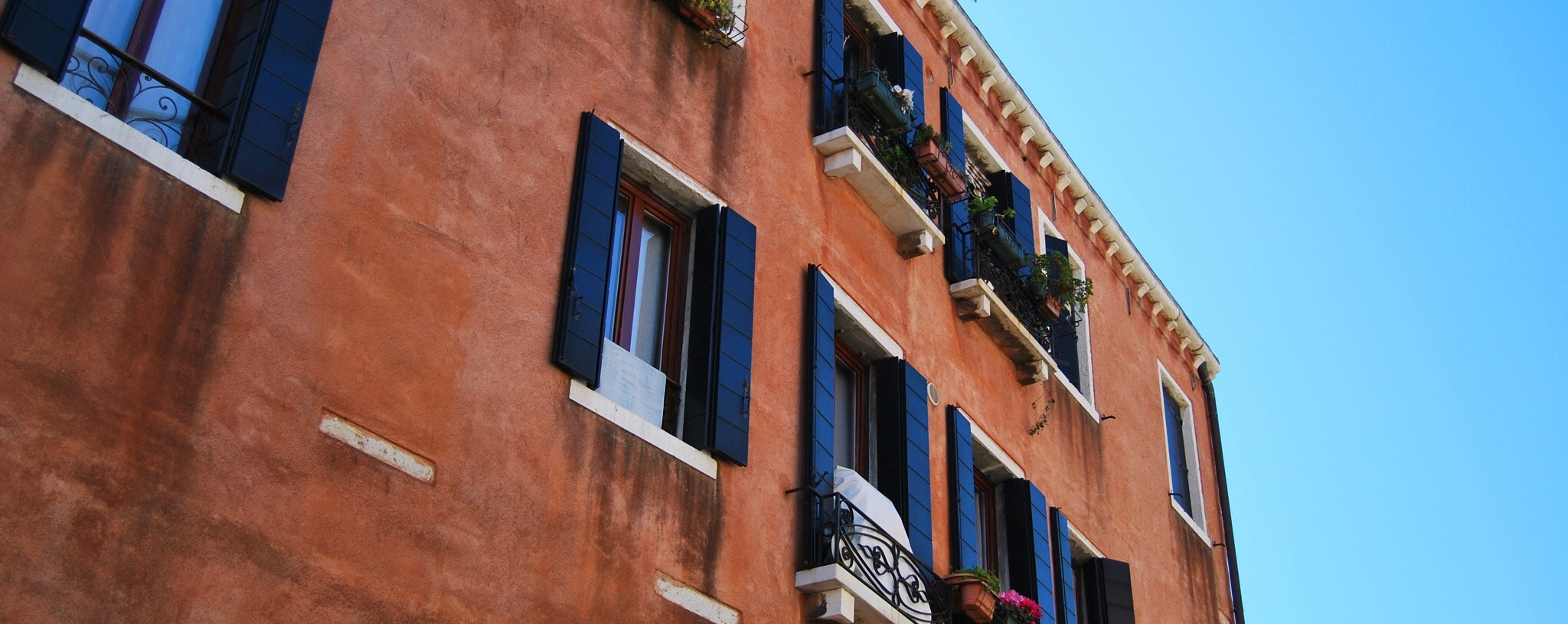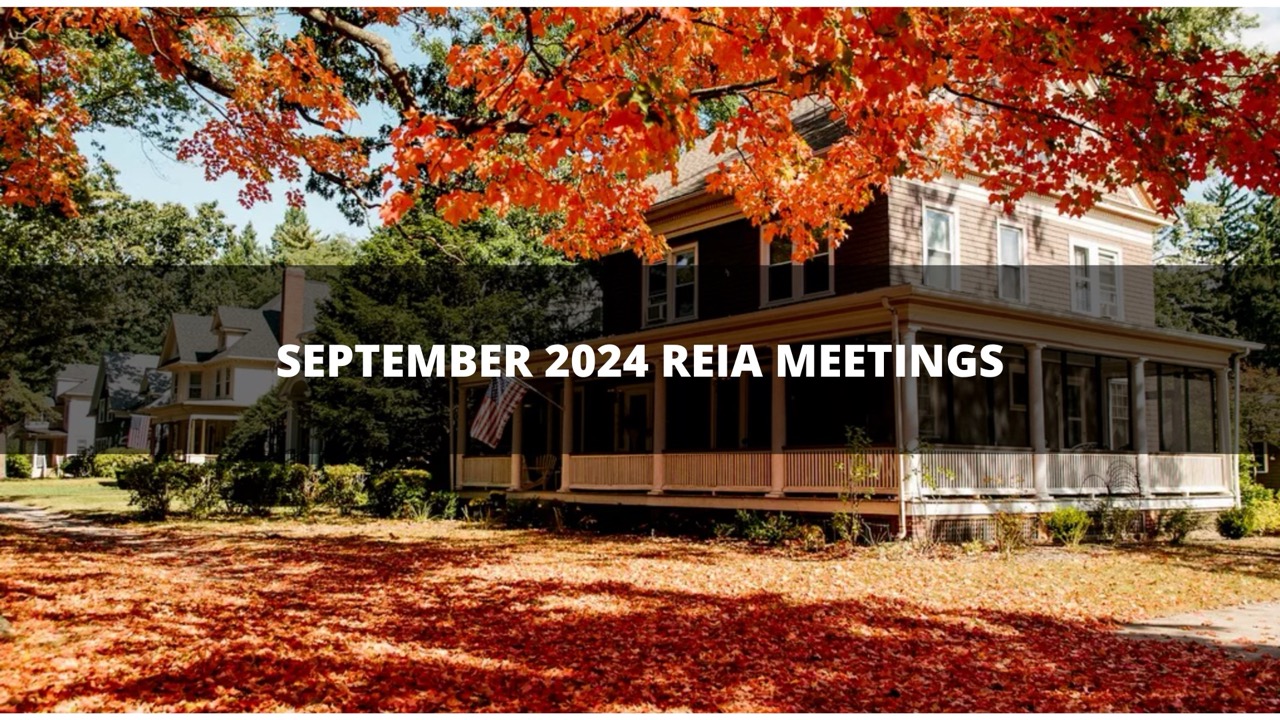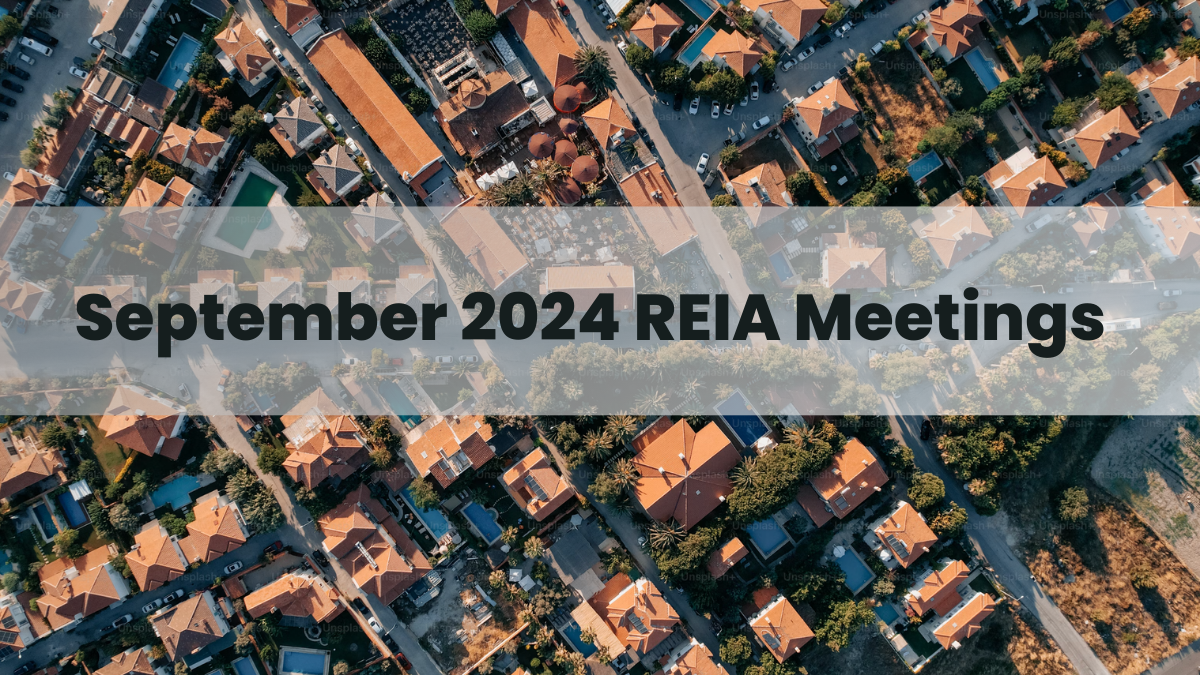Never Overpay for Investment Properties Again! Follow These 3 Methods
Are you afraid to overbid on investment properties? This detailed article explains how investors calculate the quality of the investment they make in a property, which helps determine what they can pay. We will begin with rental properties, and then flip properties.
Evaluating a Rental Property
There are two main ways of calculating the quality of the return on investment for a rental investment properties. The first involves using the cap rate to determine if the ROI is in the range you need to make the deal worth it. The second is calculating your monthly cash flow. We will start with the cap rate.
Tip: If you are looking for rental properties in your area, try creating a free account on our site. Many deals include a rental value in their description.
Method 1: Cap Rate
The cap rate is the ratio of net rental income compared to the purchase price of the property.
To calculate your estimated gross rental income earnings, total up your rental income for the entire year, and subtract 5% for potential vacancies.
(Rental Income x 12) – (Rental Income x 12 x 0.05) = Gross Rental Income Earnings
Next, add together all your expenses throughout the year.
- Insurance – Contact your insurance agent to run over the specifics of the property and get a quote for the coverage you need.
- Property Taxes – The property taxes are going to be different from what the former/current seller is paying since the property will not be owner-occupied. Contact the local county assessor to find out what the property taxes will be for the rental.
- Utilities – You may decide to have your tenant pay most of the utilities, but make it very clear in your agreement with them what they are responsible for. Many landlords choose to absorb the fees and to account for the costs via the rent. Utilities can include water, gas, electricity, pest control. We recommend NOT absorbing fees such as electricity into the rent, as research shows costs are lower when tenants are directly responsible.
- Maintenance – We suggest accounting for maintenance by estimating 5% of your gross income.
- Mortgage or Other Lender Fees – If you do not pay for the investment property in cash, be sure to calculate the monthly mortgage amount and another other fees and costs.
- HOA Fees – You can find out what the HOA fees are by contacting the former/current seller, but be aware that the fees could change. Investigate beyond the current fees to determine whether the fees are scheduled to rise or if an assessment is coming. (Source).
- Property Management – If you plan to hire a property manager, be sure to include this monthly fee in your costs as well. Many property managers charge around 10% of the rental price. (For example, if the property rents for $1,500 per month, the property manager would receive around $150).

Lastly, to calculate your cap rate, divide your net operating expenses by the purchase rate.
Example:
Annual gross rental income: Let’s say you buy a rental property that rents for $1,000/month. Multiply $1,000 by 12 to get the annual gross income. That equals $12,000 per year in gross rental income. Then, subtract 5% for potential vacancies, and the new total comes to $11,400. This is what you should use for your projected actual gross income.
Gross Rental Income: $1,000 x 12 = $12,000
Potential Vacancies: 12,000 x 0.05 = $600
Projected Gross Income: $12,000 – $600 = $11,400
Operating expenses: Let’s use arbitrary numbers for this example, but you can find many of these estimations on real estate websites that include properties in your market area (Zillow.com, for example). For this example, let’s say the taxes and insurance are $200/month, the utilities are paid by the tenant, maintenance is estimated to be $600/year, and there is no HOA fee or property management. Add it all up, and you end up with $3,000 in operating expenses for the year. This example also assumes the buyer paid in CASH, so no mortgage or loan amount was factored into the calculation.
Operating expenses: ($200 x 12) + 600 = $3,000
Net operating income: The gross rental income minus the operating expenses comes to $8,400, which is the net operating income in this investment property example.
Net Operating Income: $11,400 – $3,000 = $8,400
Cap rate: Lastly, to calculate your cap rate, divide the net operating income by the purchase price. If the house costs $100,000 in this example, then the cap rate is 6.7%.
Cap Rate: $8,400 / 100,000 = 8.4%
What is a good cap rate for a rental investment property?
It depends on the house. For a newer house in a decent neighborhood that does not require major repairs, maintenance or other risks, 4%-10% is a reasonable return rate. (Source.)
However, in a higher risk property, a rate of closer to 20% might be more reasonable.
Other considerations:
The example above assumed the property was paid for in cash. If you borrow from a lender, be sure to include the fees involved when calculating your operating expenses for the initial loan and recurring mortgage.
The example above also did not mention 1) rising rental rates and 2) property value appreciation. If you’re in it for the long haul, your investment property WILL appreciate, and the rents will rise with appreciation (if you’re in a good market). While you cannot include these estimations in your initial calculations, it’s good to keep in mind that there is great potential for the cap rate to improve as the property gains equity.
For these reasons, cash flow is often a more popular way for investors to calculate what they are willing to pay for a rental investment property.
Method 2: Cash Flow
Most rental property investors are more likely to make a buying decision by looking at monthly cash flow of their investment.
In order to calculate your monthly cash flow, simply add up all your monthly expenses and subtract the total from the rental amount.
In this example, let’s use a property from MyHouseDeals, 5602 Lakefield Dr., and include a monthly mortgage of $500/month (ARV is estimated to be $75,000). If taxes and insurance are $150/month, utilities are paid by the tenant and estimated repairs are $600, or $50/month, then your cash flow is:
Monthly Costs: Mortgage ($500) + Taxes/Insurance ($150) + Maintenance ($50) = $700
Monthly Cash Flow: Rent Price ($1,000) – Costs ($700) = $300
Let’s perform one more example. This house has an ARV of $100,000. The interest rate is 5%, making the monthly mortgage $737. The insurance and taxes add up to be about $225 per month. The rental prices in the area are closer to $1,300, so we will use these numbers below.
Monthly Costs: Mortgage ($737) + Taxes/Insurance ($225) + Maintenance ($65) = $1,027
Monthly Cash Flow: Rent Price ($1,300) – Costs ($1,027) = $273
Some investors accept as low as $100 cash flow, so it’s up to you to determine what an acceptable monthly cash flow is. If the property is expected to appreciate and there are no major problems with the house, $100 cash flow could work great.
Method 3: Flip Properties
When we discussed rentals, we talked a lot about CAP rate and cash flow, because ultimately with a rental, those are the numbers you are looking for. However, with a flip, we approach value much more directly.
Tip: If you are looking for investment properties, try creating an account on our site for free to view properties in your area.
The typical formula for real estate investing properties is 70% of the ARV minus repairs. Example:
(After Repair Value x 0.7) – Repair Costs = Your Offer
($200,000 x 0.7) – $30,000 = $110,000
However, the formula above represents a guide, not a hard fast rule. If you start by determining your plans and exit strategy, then you ARV and repair cost estimates are fixed numbers – but the percentage discount is flexible. It’s flexible depending on your strategy, but it can also vary from market to market.
For example, you might pay more than 70% if:
The market demands it:
In a seller’s market, sellers hold the advantage. Seller’s markets happen because of low inventory or other market variables, and cause buyers to typically pay more. However, this isn’t necessarily a disadvantage because when you flip the property, you become the seller, and buyers are likely to pay higher prices in these markets. In extreme seller’s markets, bidding wars raise real estate prices above asking price!
The investing strategy is based on appreciation:
If your investing strategy is based on appreciation, you might be willing to pay more than 70%. Investing based on appreciation involves significant time, money, and risk, but the payoffs can be significant. The primary risk is that appreciation is NOT guaranteed. Long-term commitment helps ensure that you carry the property through any market dips, but there are still no assurances – anything can happen in the real estate market.
The deal is a Subject-To:
Subject-To refers to when an investor buyer assumes payments of a seller’s mortgage (in other words, subject to the existing mortgage). The investor “purchasing” the property assumes the deed, but not the loan. The loan stays in the original owner’s name, and if the investor discontinues payments, they could lose the property and equity in it; but since the home loan is not in the investor’s name, it affects the credit of the seller, not the investor.
If a motivated seller wants to sell the house but has little equity, a Subject-To is a good way for them to get out from under the house without selling it outright. Subject-To’s are attractive options for investors who have bad credit since no new loan is needed. Some sellers feel relieved to simply “sell” the house without having to PAY to get out of it. If the house is in good shape and there are no back-taxes or payments, the investor can assume the property with little or no money down.
If you are purchasing Subject-To, you may be able to buy at 101% ARV if the financing is favorable and the area is desirable. (Source.)
Similarly, you might pay LESS than 70% if:
The market demands it:
When the market crashed in 2008, it became common to buy at much deeper discounts than 65%. This can happen on a large scale, or a small scale. The important thing here is to know your market. Ask around, attend events, and see what other people are doing. The standard discount in your market area will be pretty consistent with few variables from wholesaler to wholesaler.
A motivated seller allows it:
Some sellers become particularly motivated to sell their house. For example, I knew a tired landlord who had an investment property become vacant. Not only did she want to sell the property quickly, but she wanted to sell it especially quickly since she was trying to meet a hard deadline for tax purposes and use the money to pay for her son’s college tuition. She couldn’t wait, so she sold the property for a little less than the standard discount in order to get rid of it as quickly as possible.
Additionally, some wholesalers and motivated sellers become more flexible on the asking price if you can offer 100% cash with no financing. Cash offers simplify closings and create less barriers and potential for issues near the closing date. Cash offers can also close more quickly, so if time is an issue, you might be able to pay less than the 70%.
Lastly, some sellers wait too long and become financially desperate. Perhaps they fell behind on payments, their life changed very quickly, or the house is in severe disrepair. In these situations, especially when dealing directly with the seller, you can negotiate less than 70% of the market value. Sellers are usually grateful to move on and have cash in their hands.
So, what questions do you have?
After reading about how to evaluate the quality of your investment on both rental and flip properties, do you feel more confident about your ability to negotiate a price you are willing to pay on a deal? Why or why not? Leave your comments below so we can read your thoughts.
Additionally, make sure to practice what you learn by viewing properties in your area on our site. Set up a free account today!





